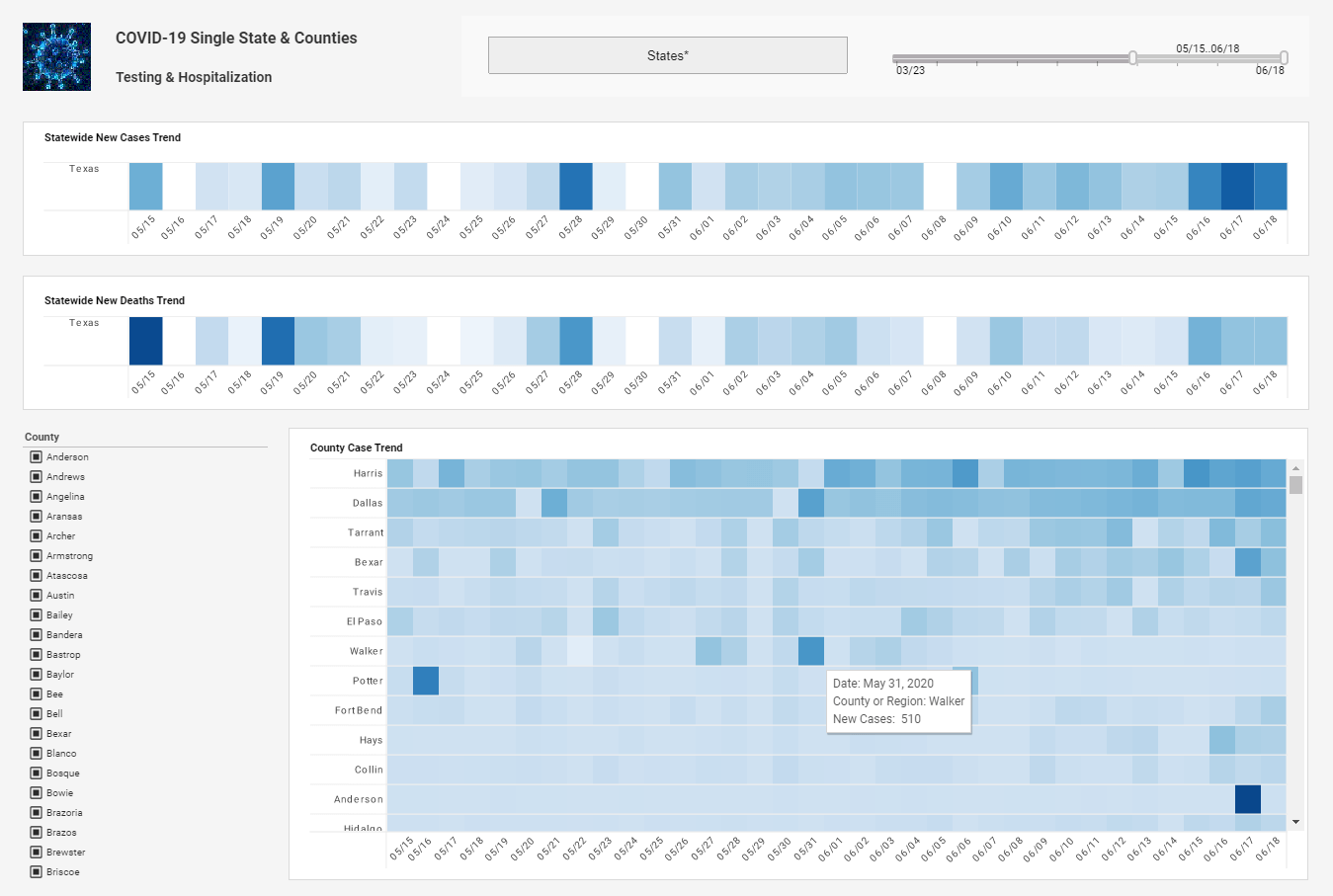Future for Business Intelligence
Below is the continuation of the transcript of a Webinar hosted by InetSoft on the topic of Developments in Business Intelligence Software. The presenter is Mark Flaherty, CMO at InetSoft.
Looking to the future, enterprises will continue to expect their data to increase, and technology will continue to evolve as well. So what do you see for the future for business intelligence, where is the market headed?
Mark Flaherty (MF): The simple answer to that is that the future is here today. As I said before, the data volumes these days are in petabytes, or thousands of terabytes. Requirements change way too fast. The world moves at lightening speed. So I think the two key areas that we discussed and addressed throughout this discussion and presentation, agility and self service for business users are going to remain key trends for the foreseeable future. Luckily, we do have some next generation technologies to address them and our advice to all of the enterprises that are faced with these challenges is not to fight them.
Sure, there are definitely some concerns on part of IT traditionalists. They are concerned about relinquishing control into the hands of end users. They are concerned about the single version of the truth. But guess what? The genie of end users trying self-service for their BI needs is out of the bottle, so everybody needs to address it. They need to embrace it, and they need to take a very hard look at today’s fast moving environments and see how this next generation BI technology can address them.
Next think about two big influences going on right now. First of all, we have speed, faster time to decision; the other one is volume, not only volume of data, which I think is the most obvious point, but also volume of users, more people using BI and analytics. These influences combined with a more business value driven use of analytics against current data, not just historical data, is a big-big shift.
The next thing that will influence business intelligence is the use of unstructured information. People are going to want to include that in their BI systems. How to implement that one with semantics is a challenge. Another area of future development is automated embedded intelligent solutions which will bring us the right analytics at the right moment of time.
The explosive data volumes and the challenges that companies face in trying to manage and make sense of all that data are not insignificant. A lot of our technology development going forward is going into our high performance data access engine, which we will be able to help companies manage those large volumes of data, but more importantly to drive better and faster insight into that data which is currently a challenge today.
Businesses today need to ingest a wide range of unstructured information into their data lakes to gain comprehensive insights and drive informed decision-making. One crucial type of unstructured data is text-based information, including emails, customer reviews, social media posts, and news articles. Analyzing this textual data allows businesses to understand customer sentiment, identify emerging trends, and gauge public perception of their products or services. By leveraging natural language processing (NLP) techniques, businesses can extract valuable insights from unstructured text data, such as sentiment analysis, topic modeling, and entity recognition, enabling them to make data-driven decisions and enhance customer satisfaction.
Another example of unstructured information that businesses need to ingest into their data lakes is multimedia content, such as images, videos, and audio recordings. With the proliferation of digital media platforms and the increasing popularity of visual content, businesses can derive valuable insights from analyzing multimedia data. For instance, retailers can use image recognition technology to analyze product images and identify popular trends or customer preferences. Similarly, healthcare providers can leverage medical imaging data to diagnose diseases, monitor patient health, and improve treatment outcomes. By incorporating multimedia content into their data lakes, businesses can unlock new opportunities for innovation, personalization, and competitive differentiation.
Geospatial data represents another important category of unstructured information that businesses need to ingest into their data lakes. This includes location-based data from GPS devices, satellite imagery, and geographic information systems (GIS). By integrating geospatial data with other structured and unstructured data sources, businesses can gain valuable insights into location-based patterns, spatial relationships, and geographical trends. For example, logistics companies can optimize delivery routes and minimize transportation costs by analyzing real-time location data from vehicles and traffic sensors. Similarly, retailers can use geospatial analysis to identify optimal store locations, target local markets, and tailor marketing campaigns based on regional preferences and demographics.
Sensor data from Internet of Things (IoT) devices represents another significant source of unstructured information that businesses need to ingest into their data lakes. With the proliferation of connected devices across various industries, businesses can collect vast amounts of sensor data related to environmental conditions, equipment performance, and operational processes. Analyzing IoT sensor data enables businesses to monitor asset health, predict equipment failures, and optimize resource utilization in real time. For instance, manufacturers can implement predictive maintenance strategies to reduce downtime and improve production efficiency by analyzing sensor data from industrial machinery. Similarly, utilities companies can optimize energy consumption and reduce costs by analyzing sensor data from smart meters and grid infrastructure. By incorporating IoT sensor data into their data lakes, businesses can unlock valuable insights to drive innovation, improve operational efficiency, and enhance customer experiences.


